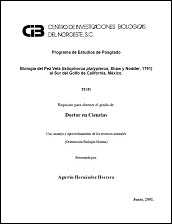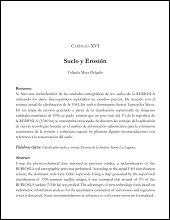ASOCIACIONES DE LOS MATORRALES DE ISLA GUADALUPE, MÉXICO
PLANT SCRUBS ASSOCIATIONS OF GUADALUPE ISLAND, MEXICO
Autor
MARTHA LIZETH CECEÑA SANCHEZ
ALFONSO AGUIRRE MUÑOZ
José Delgadillo Rodríguez
Metadatos
Mostrar el registro completo del ítemResumen
"En este artículo se describe la vegetación de tipo matorral de Isla Guadalupe, identificándose cinco asociaciones vegetales a partir de 130 relevés (inventarios). Se elaboró un análisis de conglomerados para clasificar la vegetación usando el índice de Jaccard, en el cual se diferenciaron dos grupos principales que fueron denominados como matorrales del norte y del sur. En cuanto al análisis florístico, se identificaron 75 taxones distribuidos en 30 familias y 55 géneros, de los cuales 30 corresponden a plantas sufrútices, 43 herbáceas y dos geófitos. Las familias Asteraceae (14 taxones) y Fabaceae (8 taxones) fueron las más representativas y diversas. Este estudio permite concluir que hay una respuesta homeostática positiva del ecosistema insular a favor de la recuperación de sus comunidades vegetales originales después de la erradicación de la cabra asilvestrada." "In this article the scrubland vegetation of Guadalupe Island is described, identifying five plant associations from 130 relevés (inventories). A cluster analysis was developed to classify the vegetation using the Jaccard index, in which two main groups that we denominated as scrubs of the north and the south were differentiated. Regarding the floristic analysis, it was possible to identify 75 taxa distributed in 30 families and 55 genera, of which 30 correspond to subshurbs 43 herbaceous and two geophytes. The families Asteraceae (14 taxa) and Fabaceae (8 taxa) were the most representative and diverse. This study allows us to conclude that there is a positive homeostatic response of the insular ecosystem in favor of the recovery of their original plant communities after the feral goat eradication."
Colecciones
Ítems relacionados
Mostrando ítems relacionados por Título, autor o materia.
-
PROMOCIÓN DEL PERIFITON PARA EL CULTIVO DE CAMARÓN BLANCO: HACIA UNA ACUICULTURA ECOLÓGICA
DOMENICO VOLTOLINA LOBINA; JUAN MANUEL AUDELO NARANJO; MARIA DEL ROSARIO PACHECO MARGES -
Suelo y Erosión
YOLANDA LOURDES MAYA DELGADO


